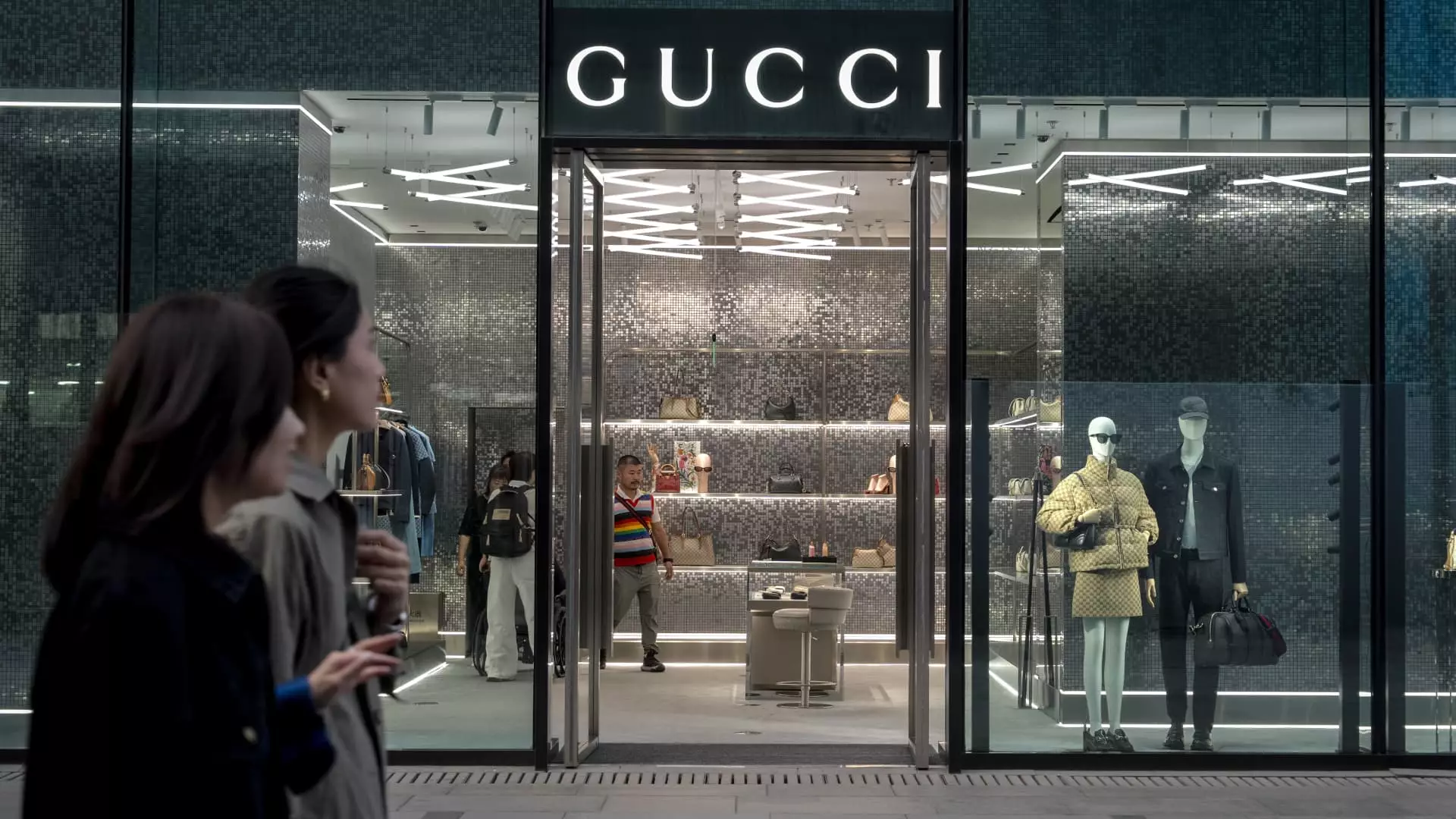In an environment where consumer preferences can shift as swiftly as fashion trends, Kering, the French luxury giant known for its prestigious brands such as Gucci, Bottega Veneta, Balenciaga, and Alexander McQueen, is facing significant headwinds. The company recently released its fourth-quarter results, which revealed a surprising drop in sales, leaving industry stakeholders pondering the implications for one of the most storied names in luxury fashion. Sales tumbled 12% year-on-year to €4.39 billion ($4.52 billion), almost meeting analysts’ modest forecasts, yet illustrating the broader struggles the luxury sector encounters, particularly in the wake of declining demand for its flagship brand, Gucci.
Gucci, which is pivotal to Kering’s identity and finances, has experienced a shocking downturn. For the final quarter, reported revenues plummeted by 24%, amounting to €1.92 billion, thus amplifying concerns about the brand’s waning allure. Once seen as the crown jewel of Kering’s portfolio, Gucci’s steep decline is not merely a statistic; it paints a broader narrative of shifting consumer behaviors and the pressures luxury brands face in retaining their market position. The growing demand for authenticity and sustainability within the luxury sector poses a challenge that Kering must navigate carefully to rejuvenate its once-celebrated brand.
Kering’s full-year results echoed the troubling trends noted in Q4, with an overall annual revenue decline of 12% to €17.19 billion, modestly outperforming analysts’ expectations. The company’s operating income stood firm at €2.55 billion, yet this was dramatically less than the previous year’s figure of €4.75 billion. This stark decline signifies not only a year of financial underperformance but marks a critical juncture for Kering in deciding the future direction of its luxury brands amidst a downturn in consumer interest.
Despite these disheartening figures, Kering’s stock experienced an initial increase of 6% on the day of the release, highlighting a touch of optimism among investors who are awaiting signs of a recovery. However, this enthusiasm proved short-lived, as the shares stabilized to just a 0.5% uptick shortly thereafter. This volatility underscores the precarious position in which Kering currently finds itself—both optimistic about potential turnaround strategies, yet burdened by the heavy weight of a struggling flagship brand.
In the face of what appears to be an “annus horribilis,” Kering has recognized the urgent need for change at Gucci, culminating in the departure of its design chief, Sabato De Sarno, after a tenure of less than two years. De Sarno’s exit follows the significant stylistic shift from former creative head Alessandro Michele, whose vibrant and opulent designs captured attention for years. In declaring this leadership transition, Kering appears to be signaling a broader internal recalibration aimed at restoring Gucci’s reputation and market share. Analysts suggest this new appointment will be pivotal in signaling a fresh start for the brand.
Experts are cautiously optimistic, viewing the restructuring as essential to revitalizing Gucci. However, long-standing legacy issues loom large, leading many to defend their skepticism regarding the potency of this shift. The fashion industry is notorious for being cyclical, where even temporary highs can be a precursor to low points, making it imperative for Kering to navigate these changes with precision.
Kering’s challenges are not isolated; they reflect a broader industry struggle. Leading luxury conglomerates like LVMH have also reported disappointing results, creating uneasy ripples across the sector. Chinese consumers, once seen as a pillar of growth for luxury brands, are now exhibiting cautious spending behaviors, further complicating the recovery prospects for Kering and its peers.
Industry analysts have begun to highlight promising indicators for 2024, suggesting a potential rebound in operating profits across various brands. Nevertheless, the steep climb remains daunting, as Kering’s stock continues to underperform with a loss of over 2.5% in 2023 and a profound drop from prior highs. Investors remain on edge, hopeful for a strategic rebound but wary of the uncertainties that characterize the luxury market today.
As Kering grapples with its current challenges, the path forward will require not only innovative and bold creative direction but also an acute understanding of evolving consumer preferences. The general perception surrounding Kering hinges on its ability to revitalize its flagship brand Gucci while ensuring its other houses also thrive. Ultimately, how Kering addresses these issues will determine its long-term standing in the competitive realm of luxury fashion. The road ahead may be fraught with challenges, but with careful strategy and strong leadership, Kering can strive for stabilization and renewed growth.

